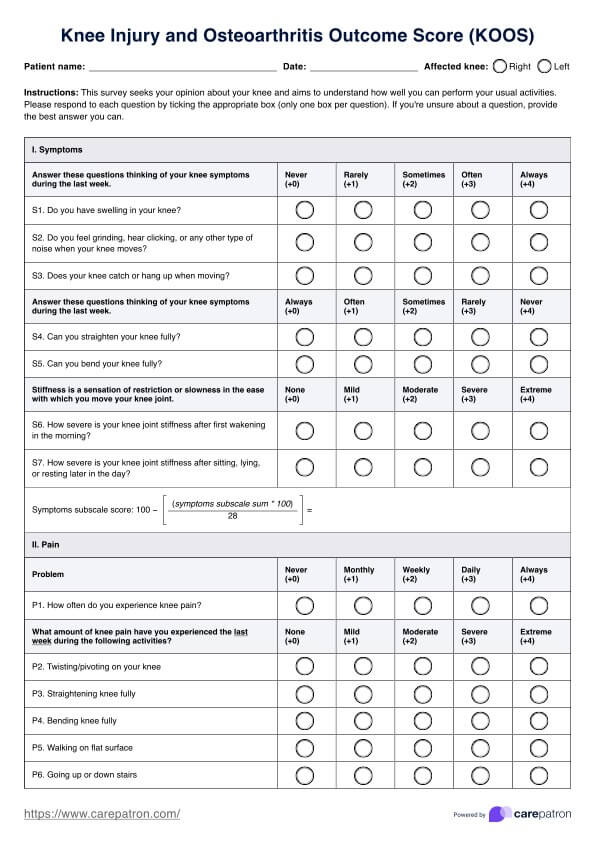The Injury and Osteoarthritis Outcome Score (KOOS) is suitable for patients who have experienced knee injuries or are managing conditions like osteoarthritis.

KOOS
Discover the essential guide for health professionals on effectively utilizing the Knee Injury and Osteoarthritis Outcome Score (KOOS). A free PDF download with examples is available.
Use Template
KOOS Template
Commonly asked questions
The Injury and Osteoarthritis Outcome Score (KOOS) should be used at initial assessment and periodically during treatment to monitor progress.
No, The Injury and Osteoarthritis Outcome Score (KOOS) is freely available, making it accessible to all healthcare providers and researchers.
EHR and practice management software
Get started for free
*No credit card required
Free
$0/usd
Unlimited clients
Telehealth
1GB of storage
Client portal text
Automated billing and online payments











